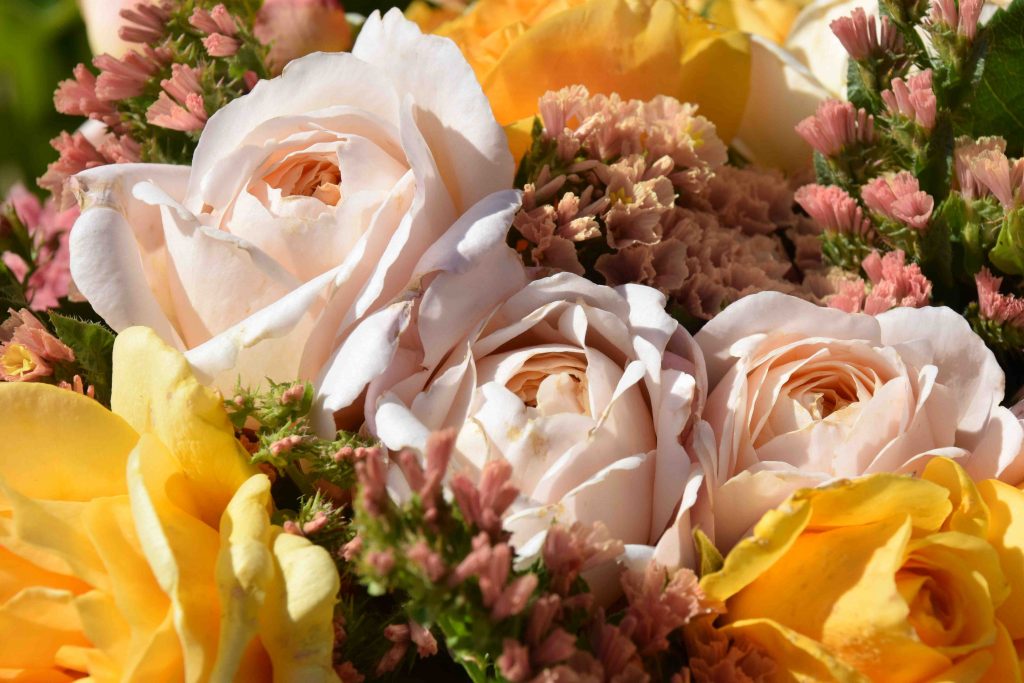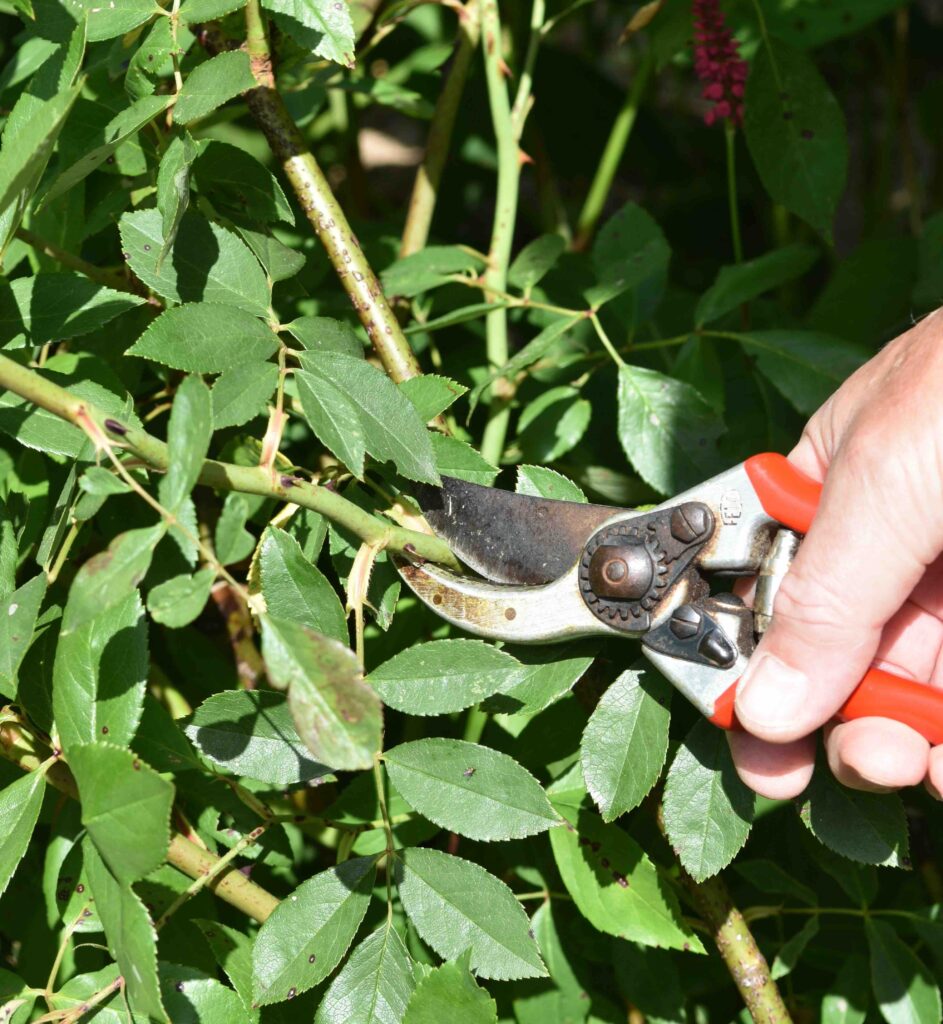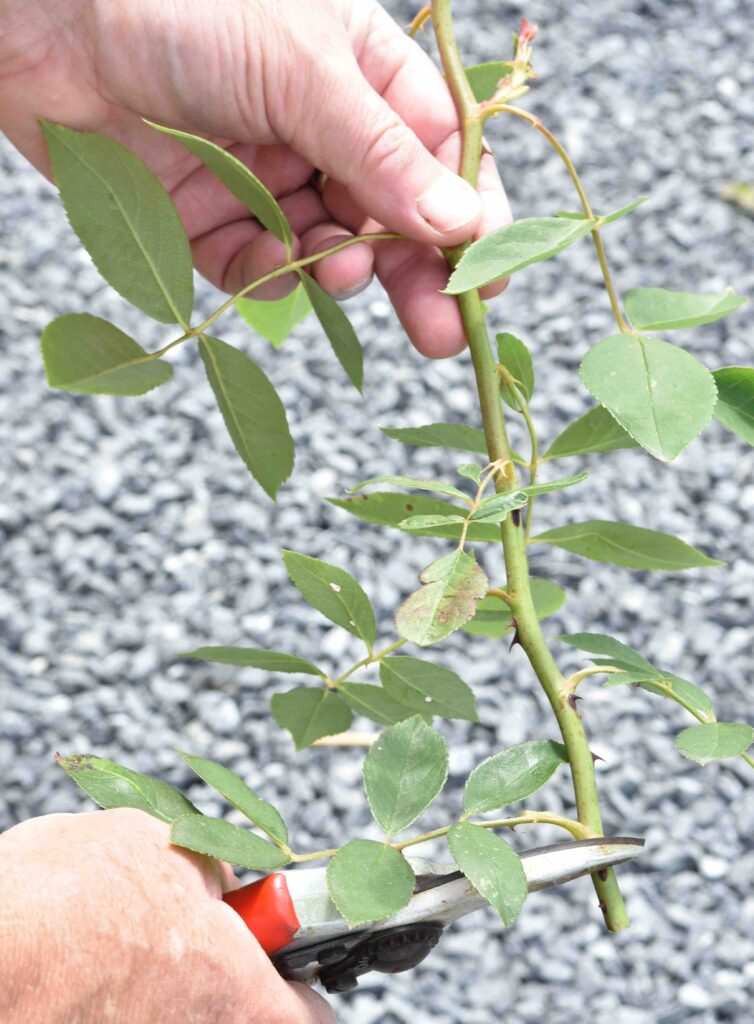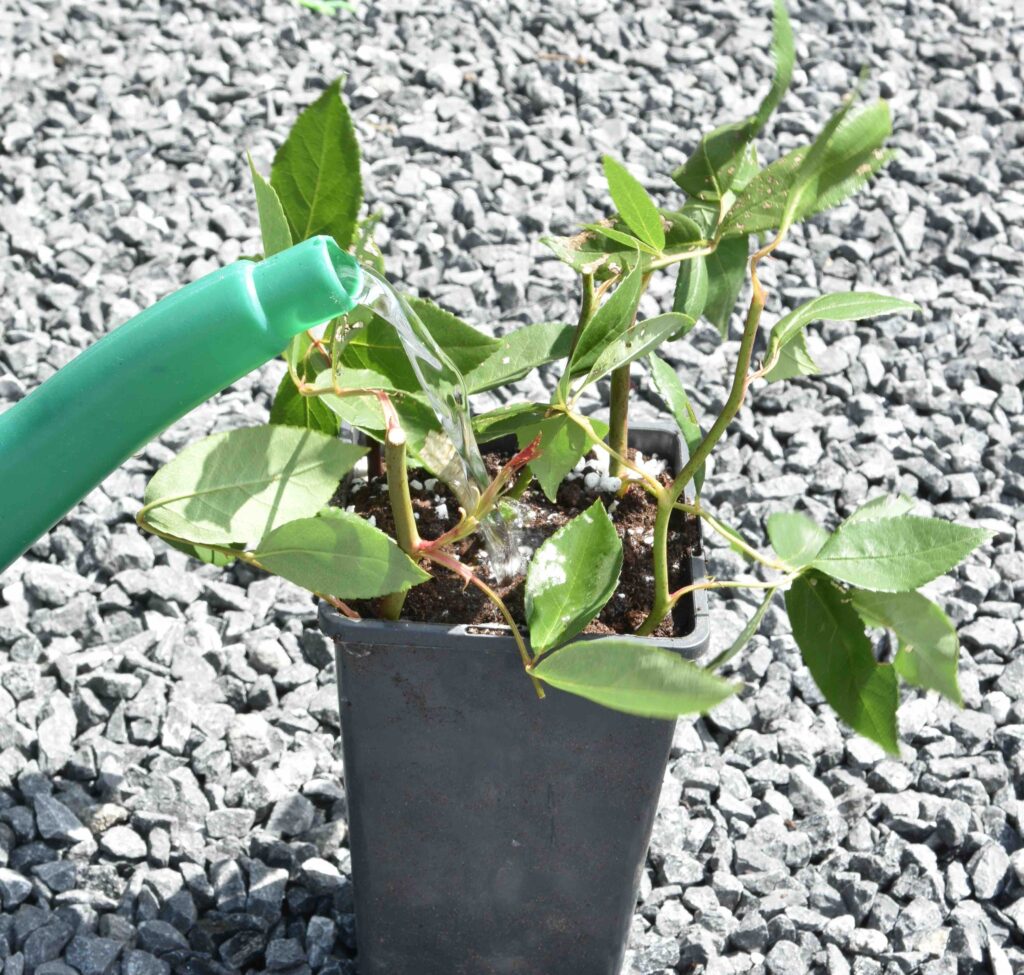
One of the most frequently asked questions I have to answer is whether old roses can be moved. It is usually in association with a story that the rose has special memories or was planted for a special occasion. The answer varies according to the age of the rose but also the time of year. As long as the rose is not huge, it will possibly move successfully when it is dormant, from November to March, but attempting to dig up and replant a rose in summer is doomed to fail.
A far better option is to take cuttings so you can take the rose with you when you move. Or just to make some new bushes.
Commercially, roses are ‘budded’ – grafted onto a rootstock. There are various reasons for this but most roses will grow perfectly well on their own roots and cuttings are fairly easy to take. Now is the ideal time. Some new roses are protected against illegal commercial propagation but you can take a few cuttings for your own use.
Before you start, have a deep pot ready, filled with your cuttings compost. I use a mix of equal parts multipurpose compost and perlite. The compost just needs to be light and well-drained. Once inserted, place the pot of cuttings in a shady spot. The cuttings will root in a few months, make new shoots and can be separated and planted out next spring after being overwintered in a cold greenhouse or cold frame (or outside at a push).

Once you have your pot ready, collect your cuttings. Only take cuttings of shoots that are healthy and not covered in aphids or disease. The shoots you need are the young shoots that grew this year and have just flowered. The stem will have a dead flower at the top. The shoots need to be about 30cm long but, more importantly, have five or six leaves. The length will depend on the variety and the vigour of the rose.
Cut off the stem just above a leaf, thus effectively deadheading the rose bush. Take the cutting and trim it just below the lowest leaf.

Then remove the lowest leaf and the next and the next. If you like you can use the knife to scrape away some of the ‘rind’, about 4cm long, from a strip on one side at the base. This can help encourage rooting.

Then cut the top of the cutting just above a leaf so the cutting has two leaves at the top and with three leaves removed from the lower half. (For clarity – rose leaves are made of about 5 leaflets so I am talking about removing the ‘leaves’, each with five leaflets)
Your cuttings are now ready to insert into the pot. Each needs to inserted deeply so that at least half the length is under the compost, so the lower leaves are removed. The two leaves that are left should be above the compost surface. You can use a rooting stimulant if you like but it is not essential.

You can put four cuttings in a deep, square pot.

Then give them a deep, thorough watering. You can put a plastic bag over them if you like but leave them outside in a shady spot and keep them moist and never allowed to dry out. You may see shoots appearing in a few months but do not disturb the cuttings until spring when they should be rooted and you can separate them, carefully, in March, and plant them out.

Good luck!
Weekly reminders
Pull up and compost old veg plants. This will discourage slugs and other pests.
Remove yellowing leaves on tomatoes
Sow lettuce, rocket and other salad leaves
deadhead summer flowers to prevent seed formation
Pick early apples and protect plums from birds